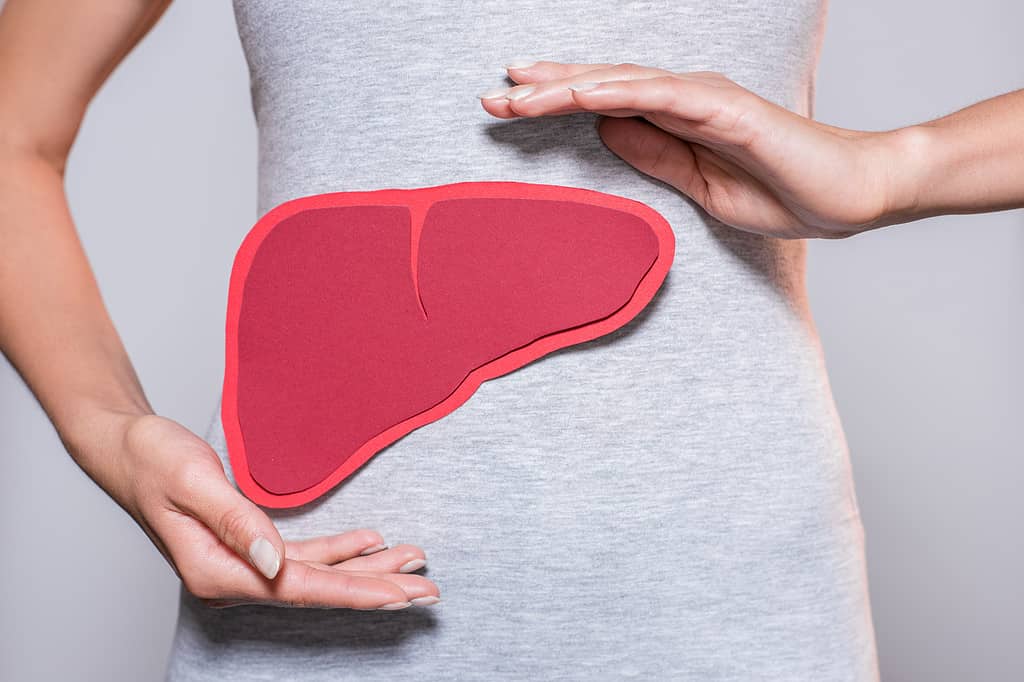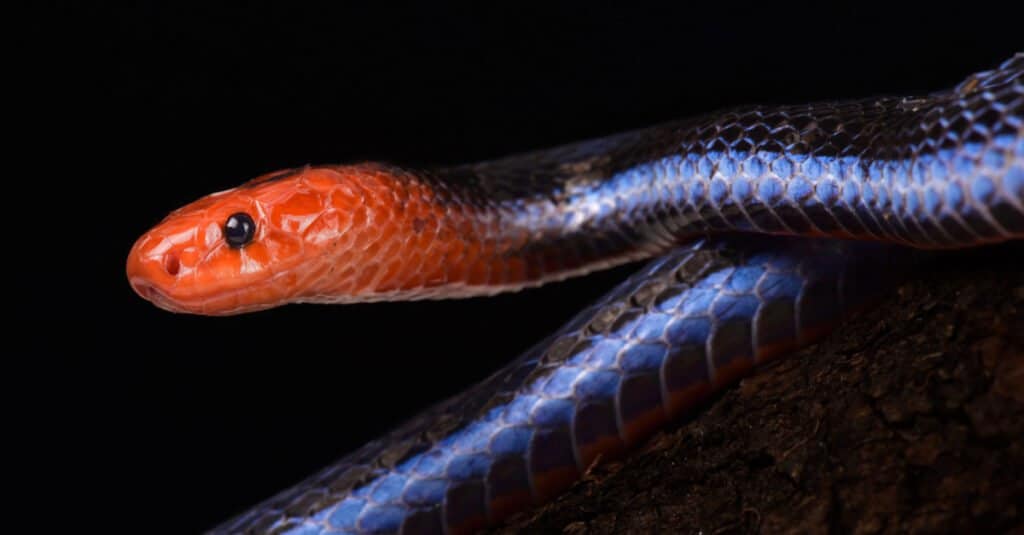Bodies are amazing machines full of organs and incredible processes like a healing immune system, a pumping heart, and masses of hormones that all keep us alive, healthy, and growing without being told what to do! Glands perform some of the most incredible processes, but what are they exactly, and what’s the largest gland in the body?
Let’s take a look at the body’s largest gland, where it is, what it does, and why it’s essential to life.
The Body’s Largest Gland
The largest gland in the body is the liver. It’s also the largest internal organ we have and the second largest organ in the entire body, beaten only by our skin.
Your spongey liver is situated in the upper right-hand section of your abdominal cavity. It sits below your diaphragm but on top of your stomach. It’s formed from two major lobes and two smaller lobes, shaped like a cone, and colored dark red-brown. An adult human’s liver weighs about three pounds and holds 13% of the whole body’s blood supply at any point in the day! That’s about one pint of blood.
And the second largest organ in the body? It’s your pancreas. The pancreas produces enzymes that break down food so it’s easily digestible.

The liver is the largest internal organ we have and the second largest organ in the entire body, beaten only by our skin.
©Vitte Yevhen/Shutterstock.com
What’s the Smallest Gland in the Body?
Our known glands total 43, and the smallest is our pineal gland. It’s located in your brain where the two halves meet and is responsible for various functions, such as releasing the melatonin hormone.
What Is a Gland?
The term gland is from the Latin glandula which means ‘a little acorn.’
The organs make or move substances such as milk, saliva, sweat, digestive juice, and hormones. There are two types of glands.
- Endocrine glands that release substances into your bloodstream
- Exocrine glands release substances elsewhere, such as openings into the body or directly outside it.
The largest gland, the liver, performs both functions. It’s an endocrine gland because it secretes substances into the bloodstream, including waste, which enters our kidneys, and an exocrine gland because it puts bile into the gastrointestinal tract,
Glands are situated all over your body, including your brain. Perhaps the most familiar to us are the lymph nodes beneath our ears and on either side of the throat. If you have a cold or infection, they swell up to help your body fight it by trapping viruses or bacteria.
What Does Your Liver Do?
The liver is a mega multi-tasker operating on a level that would blow us away. It’s a major organ and vitally important because it regulates most of our blood levels and carries away waste products.
All blood that’s passed through our intestines and stomach filters through the liver. It processes the blood, removes waste, balances and creates nutrients, and metabolizes substances so we can better absorb them.
Waste, or harmful substances, are excreted into blood or bile. Blood waste is then filtered by the kidneys and removed via urine. Waste products in bile enter the intestines and leave them as poop!
Experts think a liver has 500 different but vital functions! Here are a few:
- Bile creation, which carries away waste and breaks down fats
- Contributes to blood plasma formation
- Creates cholesterol to carry essential proteins and fats through the body
- Activates enzymes that regulate metabolism and chemical processes
- Stores vitamins, minerals, and glycogen

An adult human’s liver weighs about three pounds and holds 13% of the whole body’s blood supply at any point in the day.
©LightField Studios/Shutterstock.com
Why Is the Liver the Largest Body Gland?
Researchers aren’t sure why the liver is so large, but studies suggest it’s because it has so many functions. It filters so much blood daily that it needs a large surface area.
Can You Live Without a Liver?
No, you can’t live without a liver. It is just too vital to life. If a liver completely fails, it is life-threatening and usually leads to death within two days without emergency intervention.
However, our livers are tough, and they can work partially, even if they are damaged or sections are surgically removed. Some people obtain liver transplants and lead long lives afterward.
It’s so important to look after your liver because the symptoms of liver damage are not obvious until the damage is severe. Some symptoms include:
- Yellowing eyes and skin
- Itchy skin
- Abdominal pain
- Dark urine and pale stools
- Chronic fatigue
- Nausea and vomiting
Alcohol, drugs, and excess weight all contribute to liver damage, and experts are becoming increasingly concerned about fatty liver disease, which can affect adults and children and show few symptoms.
A healthy liver contains very little fat, so fat build-up can cause significant damage, such as liver cancer, cirrhosis, and eventually liver failure. Recent research indicates that 30-45% of Americans have too much liver fat, and it’s affecting children too. Researchers believe the rise in fatty liver disease is linked to obesity, insulin resistance, and diabetes.
The symptoms of fatty liver disease include dull pain in your liver (top right of your stomach below ribs), tiredness, weight loss, and weakness.
Here’s how to keep the largest gland in your body in tip-top condition:
- Exercise regularly several times a week
- Maintain a healthy Body Mass Index (BMI)
- Cut down on alcohol intake
- Drink water instead of sugary soft drinks
- Give up smoking, or don’t start in the first place
Animal Glands We Don’t Have!
Our body’s biggest gland is the liver; we have at least 42 others, but there are some glands in the animal kingdom that humans don’t possess. They include:
Venom glands
Venomous snakes have venom glands, and the blue coral snake (Calliophis bivirgata) has the largest. Its venom glands reach more than ¼ of its entire length.
Another animal with a venom gland is the ferocious Komodo dragon. They are powerfully built predators that look like they don’t need venom to bring down prey, but Komodo dragons have a venom gland in their lower jaw. It prevents blood clotting and, in turn, massive blood loss.

Blue coral snake (
Calliophis bivirgata).
©reptiles4all/Shutterstock.com
Photophores
Light-producing glands belong to bioluminescent fish such as the small tooth dragon fish Pachystomias microdon. This glowing fish produces three different colored lights: red, orange, and blue. Experts say the blue light attracts prey, and the red light helps them see, and the orange light? Experts don’t know!
Bidder’s Organs
Bidder’s organs are backup glands in a male or female toad, better known as rudimentary ovaries. If a male toad’s testes are damaged, or testosterone levels are low, this gland grows bigger. Researchers think it might be a backup reproductive system.
The Largest Gland in the Body: Tasty Liver
Many of us have horrid memories of eating liver and onions, and a fair few people still don’t like the taste of liver, but orcas (killer whales) certainly do. In fact, orcas hunt great white sharks with the sole purpose of eating their liver. Great white shark carcasses are sometimes spotted floating in the ocean minus their livers, so how do orcas manage that without hands?
An orca pod will circle a great white shark, then spin it so it’s belly up. This immobilizes the shark. It’s called tonic immobility. An immobile shark makes it much easier for orcas to target their liver. Orca experts think they do it because shark livers are packed with dense nutrients and squalene.
Orcas are not the only predators that target livers. Lions and wolves often start eating soft organs, including the liver, heart, and kidneys, first because they are the most nutrient-rich areas.
The Human Body’s Largest Gland: The Liver
Let’s recap our question: “What is the largest gland in the body?”
It’s our liver, and it’s essential for life.
Without a liver, we can’t survive because it removes waste and toxins, activates enzymes, helps make blood plasma, and produces substances that carry vital fats and proteins around the body. Although partial livers are effective, recent research indicates an unhealthy lifestyle can cause real damage in the form of cirrhosis or fatty liver disease.
It’s essential to look after the largest gland in your body.
The photo featured at the top of this post is © Vitte Yevhen/Shutterstock.com
Thank you for reading! Have some feedback for us? Contact the AZ Animals editorial team.






